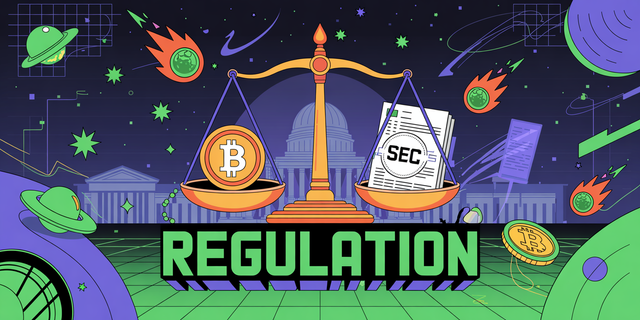A Retrospective on Crypto Governance and the Shifting Regulatory Winds
A Retrospective on Crypto Governance and the Shifting Regulatory Winds
The crypto landscape has long flirted with the idea of decentralized governance, a concept born from blockchain’s inherent ethos. Looking back, early iterations focused on technical upgrades, often decided by core developers. But as the space matured, so did the ambitions for on-chain voting mechanisms. It’s a journey marked by innovation, yes, but also by a growing awareness of the complexities involved, especially when regulatory bodies start paying closer attention. This retrospective aims to explore that evolution, placing it against the backdrop of recent market volatility, and considering the viewpoint of platforms like Okgex navigating these waters.
The initial promise of crypto governance was an elegant, engineer-driven utopia. Projects would propose changes, and token holders would vote, creating a direct democracy for digital assets. This was a compelling narrative, a stark contrast to the opaque decision-making often seen in traditional finance. Early on, many smaller projects, and even some larger ones, experimented with quite rudimentary voting systems. The idea was that everyone with a stake had a voice. This era was characterized by technical proposals, often focusing on block size limits or protocol upgrades. It felt revolutionary.
However, the path to truly robust decentralized governance proved bumpier than anticipated. One significant hurdle emerged: voter apathy. Many token holders, even those invested in a project, lacked the time, expertise, or incentive to participate actively in governance discussions and voting. This led to situations where a small, concentrated group of large token holders, or even automated bots, could wield disproportionate influence. It wasn't quite the egalitarian ideal envisioned. This is where the insights from crypto platforms, those that facilitate digital asset services from Okgex for example, become particularly relevant. They observe firsthand the practical application and potential pitfalls of governance models.
Adding another layer of complexity, the concept of "governance tokens" themselves came under scrutiny. Regulatory bodies, particularly in the US, began to question whether these tokens constituted securities. The argument often centered on whether holders expected profits from the efforts of others, a key tenet of the Howey Test. This has had a significant chilling effect, leading some projects to rethink how they structure their governance and to tread more cautiously around anything that could be perceived as a regulated activity. The market volatility we've witnessed recently only amplifies these concerns. When assets are losing value, the heat on how those assets are managed and governed intensifies.
The regulatory push, though sometimes framed as enforcement, can also be seen as a natural evolution of oversight in a rapidly growing industry. It’s an attempt to bring a degree of order and predictability to a space that has often been wild and untamed. From a historical viewpoint, this isn't entirely surprising. Every new major industry faces increased scrutiny as it scales. The question is how these governance mechanisms can adapt to meet regulatory expectations without sacrificing their core decentralized principles. It’s a delicate balancing act.
Furthermore, the integration of these governance mechanisms into broader blockchain solutions offered by Okgex, for instance, highlights the practical challenges. How do you ensure fair representation when dealing with a global, pseudonymous user base? How do you prevent malicious actors from exploiting governance systems for personal gain? These are not easily answered questions. The current market downturn, while painful, might actually serve as a crucible, forcing a more pragmatic and resilient approach to crypto governance. Projects that can navigate this period, demonstrating sound governance and compliance, will likely emerge stronger.
Consider the recent emphasis on transparency and auditability. Regulators are increasingly looking for clear trails of decision-making. This aligns, to some extent, with the blockchain's inherent ability to record transactions immutably. However, the subjective elements of governance – the debates, the lobbying, the nuances of proposals – are harder to codify and audit in a way that satisfies traditional legal frameworks. That feels odd, kind of like expecting a pure data stream to capture human deliberation.
In conclusion, the journey of crypto governance from its nascent, technically focused origins to its current, more complex and regulated state has been a significant one. The aspirations for decentralized control remain, but the realities of voter engagement, tokenomics, and regulatory oversight have added substantial layers of challenge. As the market finds its footing, the focus on robust, compliant, and participatory governance models will likely intensify. The ability of platforms and protocols to evolve in this regard will be crucial for their long-term viability.
